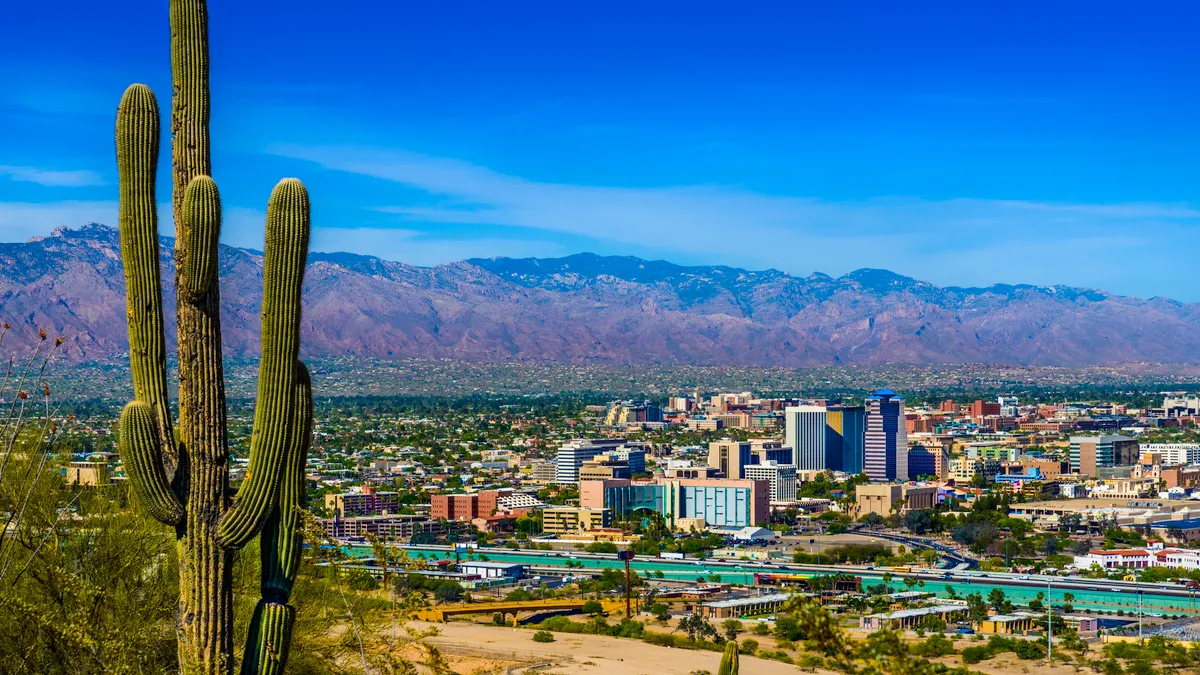Tucson, Arizona, is ready to implement its climate action plan after developing the document in “record time,” Mayor Regina Romero said at a Washington Post Live event last week.
The plan — which Tucson began developing in 2020 — was passed in March, a few months before ongoing extreme heat reminded the desert city, and the rest of the country, of the dangerous realities of a warming world.
“We have our implementation plan,” Romero said. “Hopefully, soon we will have a resilience officer for the city of Tucson. We have advisory boards, and we’re ready to apply for federal funds to make sure that we bring dollars home to implement our climate action plan.”
The plan balances short-term and long-term measures, Romero said, to protect residents now while also plugging away at long-term efforts to reduce greenhouse gas emissions and become more resilient to extreme weather events.
Romero highlighted Tucson’s recent focus on establishing cooling centers — public, air-conditioned spaces often located at senior or recreation centers, where residents can go to escape high temperatures. These centers can help protect residents from extreme heat, but some local officials say that they need more federal resources for cooling centers and other responses to protect vulnerable populations. That’s why many are pushing Congress to explicitly include extreme heat in the federal government’s definition of what constitutes a major disaster. Doing so could unlock federal resources for local extreme heat responses such as those in Tucson.
The city has collaborated with outside groups — such as the Pima County library system — to institute these cool refuges. School districts have helped the city provide all-day cooling centers for children, and the Salvation Army and other nonprofits have collaborated with the city on low-barrier cooling centers for people who are unsheltered. The city also offers free access to showers, pools, and splash pads.
Romero differentiated cooling centers from resilience hubs. “Resilience hubs are basically cooling centers but that can sustain themselves with solar energy and batteries,” she said, adding that these hubs can play a crucial role during power outage emergencies. This type of “electric catastrophe” is a very real threat in Tucson, where monsoon season overlaps with hot summer months. Just this past weekend, monsoon storms left tens of thousands of people in the area without power. “In the East Coast, people feel as though AC, air conditioning, is a luxury,” Romero said. “Here in the Southwest, AC is a necessity.”
Tucson’s long-term climate plans revolve around decarbonizing the city and planting trees to sequester planet-warming carbon dioxide, Romero said. With a goal of planting one million trees by 2030, she hopes to create “cooling corridors,” particularly in low-income neighborhoods that face the worst urban heat island effect. “We’re partnering with nonprofit organizations like Trees for Tucson and for-profit companies that are helping fund the purchasing of trees as well, so lots of layering in our methods,” Romero said.
But plants require water, which can be hard to come by in the drought-stricken area, which is why Tucson created a stormwater-harvesting program to nourish its trees. Romero also highlighted “a conservation program in the Tucson water department, where the more water you use, the more you pay into our conservation fund, and we have incentives for water harvesting in residential homes.”












